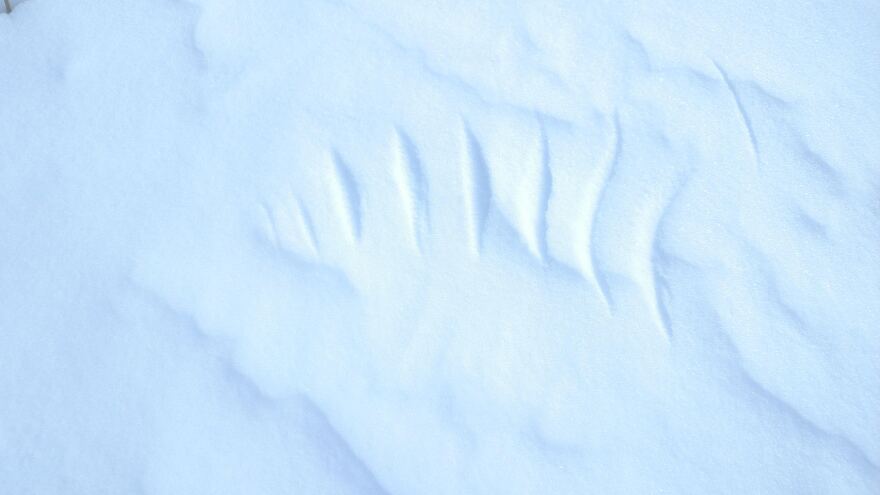Winter is a great time to find animal tracks in the snow. Today on our field guide we hear how birds also leave tracks with their feet and wings.
Cheryl Bartz from Red Pine Radio reports these tracks can be much harder to decipher:
In a meadow overlooking Crystal Lake, I found some tracks in the shape of a “T.” Each leg of the “T” was about two inches wide, with no obvious beginning or end. The snow surrounding this small patch was undisturbed.
I guessed that a bird plucked a mouse or vole from the snow and flew off, but what kind of bird? And why so many tracks?
For help, I sent a picture of the scene to Kaitlyn Bohnet, director of the North Sky Raptor Sanctuary in Interlochen. I asked her how to figure out what happened.
“I think what I would do first, one, I would celebrate because that is such a find! Like, wow! That’s so awesome!” Kaitlyn replied.

Then, Kaitlyn said look at the habitat.
“We’ve got tall trees, which both the Great Horned Owls and the Red Tailed Hawks like to hunt from. Both of those species are very prominent in our area and they like the tall trees with a field around,” she explained.
Next, she would look at the size and depth of the tracks.
“It was enough to push the snow down a fair bit and also it’s quite wide," she said. "So that leads me to think maybe not as big as a Great Horned but a reasonably robust Red Tail would make punches that big.”
Kaitlyn’s best guess was that a juvenile Red Tailed Hawk swooped down and tried to catch a small rodent, but didn’t nab it on the first try.
“They’re not afraid to walk around or stomp around trying to figure out what went wrong, which is kind of what exhibits here,” she said.
Now we know what questions to ask when we find bird tracks or wing prints in the snow. And March is an excellent time for tracking birds. As the snow melts, mice and other small rodents will be more active and attract predators from the sky.


